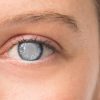During a previous discussion on LCHF and Atkins nutrition, a reader suggested exploring the South Beach nutrition plan. You can find information on Atkins for vegetarians here and for non-vegetarians here. Now, let’s delve into a comprehensive review of the South Beach Foods Plan: Phases and Food Choices Explained.
The South Beach diet follows a low carbohydrate approach that guarantees weight loss without deprivation. Similar to Atkins, this diet was developed in the late 1980s by Dr. Arthur Agatston and dietitian Marie Almon.
Dr. Agatston, a cardiologist, had numerous heart patients who needed to lower their cholesterol and shed excess weight. He discovered that patients struggled with traditional low-fat diets, which often contained added sugars that increased calorie intake. As a result, low-fat foods were found to be high in sugar, leading to insulin spikes, hunger cravings, and a cycle of consuming more sugars and carbohydrates. The South Beach diet was created to educate patients about consuming the right foods to improve their heart health and manage their weight effectively.
Unlike a temporary diet, the South Beach Diet encourages a lasting lifestyle change. By not completely eliminating carbohydrates, this approach allows for a diverse food selection while still achieving weight loss. Achieving the right balance of fats, fiber, proteins, and healthy carbohydrates is the core principle of this diet. Let’s explore the South Beach Foods Plan in more detail.
Detailed South Beach Foods Plan By Stages and Items
The foundation of the South Beach diet is based on the glycemic index, which minimizes high glycemic foods and substitutes them with low glycemic alternatives. Additional information on the glycemic index can be found here.
The South Beach Diet comprises of three distinctive phases, varying based on the individual’s weight loss goals.
Initial Phase of the South Beach Diet – Induction
This initial phase is the most challenging part of the South Beach Diet, typically lasting for two weeks. It requires close monitoring of portion sizes and the consumption of lean proteins, low GI foods, healthy carbohydrates, and low-fat dairy products to avoid excessive calorie intake. Rather than sticking to three meals a day, it’s recommended to have three main meals and two snack meals to keep the metabolism active and prevent hunger cravings.
The key is not to starve but to stop eating when satisfied. By eliminating harmful foods from the diet, starving oneself is unnecessary. Foods prohibited in this phase include processed carbs, fruits, sugars, high glycemic veggies, starches, and baked goods.
Dr. Agatston designed this phase with the purpose of reducing blood sugar levels and cravings for sugary or unhealthy foods.
Individuals consuming over 200 grams of carbs daily while following the South Beach Diet during this induction phase experience significant weight loss. This progress motivates them to continue with the diet.
Permitted Foods in Phase 1
- Cream cheese
- Cheese
- Chickpeas
- Lentils
- Lima beans
- Black beans
Restricted Foods in Phase 1
- Beets
- Corn
- Alcoholic beverages
Continuation of the South Beach Diet – Phase 2
This phase follows the initial phase and reintroduces some low glycemic foods into the diet. Weight loss in this phase occurs gradually, typically 1-2 pounds per week. Dietitians continue to lose weight steadily during this phase.
This phase does not have a specific duration. Individuals are advised to continue with Phase 2 until they reach their desired weight.
Allowed Foods in Phase 2
- Pears
- Barley
- Quinoa
Maintenance Phase of the South Beach Diet – Phase 3
The final phase is not a phase but a lifelong routine to maintain the achieved weight loss. By this stage, individuals have mastered portion control and learned to make wise food choices.
Occasional consumption of the prohibited foods from Phase 2 is acceptable, ensuring weight maintenance. With the inclusion of good carbs, the likelihood of regaining lost weight is minimized. Keep eating healthily to stay fit for life!










